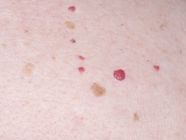Acne is one of the most common skin concerns—especially among teenagers and those with oily skin—but it can affect anyone, regardless of age.
The good news? There are many effective treatments available for acne. Here’s your comprehensive guide to managing acne and restoring clear skin.
Causes of Acne
Before discussing treatments, it’s helpful to understand why acne develops:
- Excess oil production (sebum): The skin’s oil glands produce sebum. When it’s overproduced, it clogs pores.
- Clogged pores: Dead skin cells and bacteria mix with excess oil and block the pores.
- Inflammation: Clogged pores trigger inflammation, leading to red bumps and pimples.
- Hormonal changes: Hormonal fluctuations—especially during puberty—can increase oil production and trigger acne.
Other factors can worsen acne, including stress, diet, certain medications, and poor skin hygiene.
Acne Treatment Options
The right treatment depends on the type and severity of acne. While mild to moderate acne can often be managed with topical treatments and home care, severe cases may require oral medication. A consultation with a dermatologist is key for an accurate diagnosis and customized treatment plan.
Here’s a breakdown of common treatments:
Home Care & Self-Care Tips
Stick to the following habits to help manage or prevent acne flare-ups:
- Never pick, squeeze, or touch your pimples—this can lead to scarring and infections.
- Wash your face twice a day with a gentle, oil-free cleanser formulated for acne.
- Use an oil-free moisturizer to keep skin hydrated.
- Avoid harsh products that contain alcohol or abrasive scrubs.
- Choose water-based or non-comedogenic products (they won’t clog pores).
Also:
- Always apply sunscreen (SPF 30 or higher) and wear a wide-brimmed hat outdoors.
- Keep personal items clean, such as pillowcases and makeup tools.
- Always remove makeup before bed and follow with a cleanser.
- Shampoo regularly—especially if your hair is oily.
- Shower after heavy sweating or workouts.
- Ask your doctor if any medications you're taking may be contributing to your acne.
- Maintain a balanced diet rich in fruits and vegetables, and reduce oily and sugary foods.
Topical Treatments (Creams & Gels)
Over-the-counter or prescription topical acne products help exfoliate the skin, remove excess oil, and prevent clogged pores. Examples include:
- Benzoyl peroxide
- Adapalene or retinoids (Vitamin A derivatives)
- Azelaic acid
- Salicylic acid
- Glycolic acid or other alpha-hydroxy acids
- Topical antibiotics
Tip: Start with low-strength products and increase gradually. You might benefit from using different products at different times of the day, such as one in the morning and another at night—always follow your doctor or pharmacist’s advice. Most topical treatments take 2–3 months of regular use before noticeable improvement.
Oral Medications
If topical treatments aren’t enough or if the acne is severe, your doctor may recommend:
- Isotretinoin (Accutane): A powerful medication for severe, treatment-resistant acne.
- Oral antibiotics: Such as doxycycline (Doxidar) for moderate to severe inflammatory acne.
- Birth control pills: May help regulate hormones and reduce acne in women (e.g., Yasmin, Yaz).
- Spironolactone (Aldactone): Blocks the effects of androgen hormones on oil glands; particularly helpful for women whose acne worsens before periods or after menopause.
Other Acne Treatments
These may include:
- Cortisone injections: Directly injected into cystic acne to reduce swelling, redness, and pain.
- Laser or light therapy: Helps reduce inflammation and improve skin texture.
- Cosmetic treatments: Like Hydrafacial, blackhead/whitehead extractions, chemical peels, or microneedling (dermapen) performed in a clinic.
Important Tips When Treating Acne
Treating acne takes time and consistency. Don’t expect instant results, and don’t be discouraged if you notice initial side effects like redness, dryness, or even temporary breakouts.
Stay committed to your treatment as prescribed, and results will gradually follow. If side effects become too bothersome, consult your dermatologist to adjust the treatment.
Frequently Asked Questions
What types of acne are there?
Each type requires a different approach:
- Whiteheads: Small bumps under the skin.
- Blackheads: Open clogged pores that appear black.
- Closed comedones: Clogged pores covered with skin.
- Papules: Small red, inflamed bumps.
- Nodules: Large, painful bumps deep under the skin.
- Cysts: Deep, pus-filled lesions.
How do I know if my acne treatment is working?
Signs that your treatment is effective:
- Fewer new breakouts and reduced severity of old ones.
- Smoother, clearer skin texture and tone.
- Smaller, less noticeable pores.
- Gradual fading of acne scars and marks.
Need expert support for your skin journey? Don’t hesitate to consult a dermatologist at Al-Ahli Hospital, where advanced skincare meets personalized treatment plans for lasting results.
References
- Acne, Healthdirect
- Nonprescription acne treatment: Which products work best?, Mayo Clinic
- Acne: Types, Causes, Treatment & Prevention, Cleveland Clinic
- Acne treatment, DermNet






